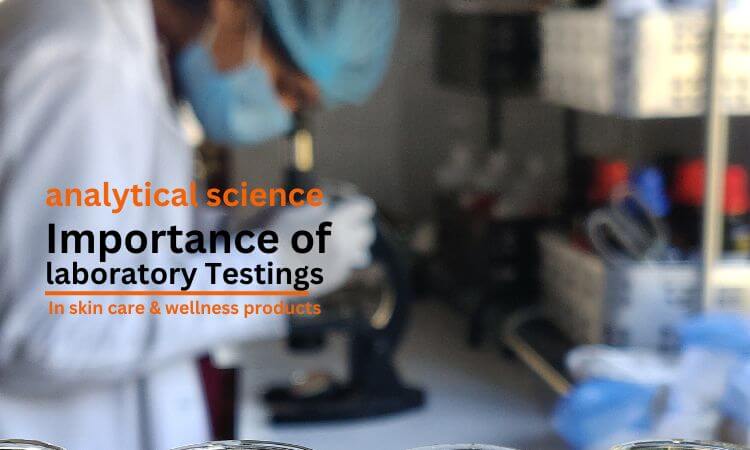
The Importance of Physico-Chemical Test Parameters in Analytical Science
Physico-chemical tests are a critical aspect of analytical science, providing valuable insights into the composition, properties, and behaviour of various substances. These tests encompass a wide range of measurements that evaluate both physical and chemical characteristics, giving researchers and scientists a comprehensive understanding of the materials they are studying. In this article, we will explore the significance of physico-chemical test parameters, their diverse applications, and the role they play in different industries including beauty, skin care & wellness.

Understanding Physico-Chemical Test Parameters
Physico-chemical test parameters are a collection of standardised measurements that assess the physical and chemical attributes of substances. These parameters encompass a broad spectrum of properties, including but not limited to:
- PH: Testing for pH in a sample is essential because it indicates the acidity or alkalinity of a substance, which is crucial in various fields like chemistry, biology, environmental science, and medicine. pH measures the concentration of hydrogen ions (H+) in a solution, determining its acidic (pH < 7), neutral (pH = 7), or alkaline (pH > 7) nature. It directly impacts chemical reactions, nutrient availability, and overall biological processes. Monitoring pH helps maintain optimal conditions for living organisms, ensures accurate chemical reactions, and aids in identifying potential environmental hazards. Regular pH testing is vital for quality control, research, and maintaining a healthy balance in natural and industrial settings.
- pH can be measured only for the liquid hence pH of solid substance can not be judged accurately as it can contain the impact of the solution. For example 1 gram of citric acid when added to 5 grams of water to make a liquid solution will be more acidic than 1 gram of citric added to 10 grams of water. Hence the water dominates the pH. Therefore judging the accurate pH of solids or products in solid form is not feasible.
- Density: The purpose of density testing in analytical science is to determine the mass per unit volume of a substance. Since we usually find oils floating on top of the water hence their density is always less than the density of the water which is 1,000 kg/m3. It is a fundamental property that helps identify and characterise materials, aiding in quality control, material identification, and the study of physical properties in various scientific and industrial applications.

- Viscosity: The purpose of testing viscosity in analytical science is to determine a fluid's resistance to flow, aiding in quality control and performance assessment of various substances. This crucial property helps in understanding the behaviour of liquids, optimising processes, and ensuring compliance with industry standards. For example a light oil will be more easy to pour or pump as compared to thick oil.
- Solubility: Testing for solubility in analytical science is crucial as it determines the ability of a substance to dissolve in a given solvent. For example oils are not soluble in water and soluble in fixed oils/fats. It helps identify the presence of specific compounds, assess their purity, and aids in the development of effective separation and purification techniques, all of which are essential for accurate analysis.
- Acid Value: It helps to determine the concentration of acidic compounds in a sample. It is crucial in various industries like food, pharmaceuticals, and oil to assess quality, stability, and shelf life, as well as monitor potential degradation or rancidity in products.
- Refractive Density: is a measure of how much light bends or changes direction when passing through the oil. It quantifies the ratio of the speed of light in a vacuum to its speed in the oil. The refractive index helps characterise the optical properties and composition of the oil.
- Refractive Index: provides valuable information about a substance's optical properties, aiding in identification and purity determination. The measurement of light bending in the material allows for the assessment of its composition, concentration, and quality in a quick and non-destructive manner.

- Optical Density: refers to its ability to absorb light, quantified as the logarithm of the reciprocal of transmitted light intensity through the oil. It indicates the degree of opacity or transparency of the oil and can be used to indirectly assess factors like concentration or thickness.
- Surface Gravity: is measured as the inverse of the density of a liquid relative to water. The higher the gravity, the lower the density of the liquid, so light oils have high gravity.
- Saponification Value: It is determined to measure the average molecular weight of fatty acids in a substance. It is particularly useful in the analysis of fats and oils, enabling the quantification of the ester bonds present. This value aids in quality control and process optimization in various industries.
- Unsaponifiable Matter: It is to identify and quantify the components of a sample that do not undergo saponification, typically found in fats and oils like shea butter. It helps to determine the quality, purity, and potential applications of these substances in various industries such as skin care, food, pharmaceuticals, and cosmetics.
- Peroxide Value: It is to determine the extent of oxidation in lipids or fats. It indicates the amount of peroxides formed due to oxidative rancidity, which can affect the quality and shelf life of various skin care, food and cosmetic products.
- Iodine Value: It is to determine the degree of unsaturation in fats and oils. It is a crucial parameter in quality control and food analysis, helping to assess the freshness, purity, and nutritional value of lipid-based substances in various industries.

- Fatty Acids: It is to determine the composition and structure of these crucial molecules. Fatty acid analysis helps in various fields, such as nutrition, food science, biochemistry, and environmental studies, enabling researchers to understand their roles and impact on health, metabolism, and ecological systems.
- Microbial Analysis: It is to identify and quantify microorganisms present in various samples, such as food, water, or environmental samples. This analysis helps in assessing safety, quality, and potential risks associated with microbial contamination, guiding proper remediation and control measures.
Why Conduct Physico-Chemical Tests?
Quality Control and Assurance: In industries such as pharmaceuticals, food, and cosmetics, physico-chemical tests are crucial for ensuring product quality and consistency. By monitoring these parameters, manufacturers can detect impurities, measure potency, and verify compliance with regulatory standards.
Product Development: During the development of new materials and formulations, researchers rely on physico-chemical tests to optimise properties such as stability, solubility, and effectiveness. This process aids in tailoring products to specific applications and target markets.

Environmental Monitoring: Physico-chemical tests play a significant role in environmental sciences, helping to assess water and air quality, detect pollutants, and monitor ecological changes. These tests are essential for maintaining the health of ecosystems and human populations.
Drug Formulation and Bioavailability: In the pharmaceutical industry, physico-chemical tests are crucial for understanding drug behaviour, including solubility and dissolution rates. These parameters influence the bioavailability of drugs and their efficacy in the human body.
Materials Characterization: Engineers and materials scientists use physico-chemical tests to investigate the properties of various materials, such as metals, herbs, oils, hydrosols. This information aids in selecting suitable materials for specific applications and understanding material behaviour under different conditions.

Research and Scientific Discovery: In research, physico-chemical tests are invaluable for gathering fundamental data and elucidating the behaviour of matter at the molecular and atomic levels. This knowledge contributes to advancements in various scientific fields.
Conclusion
Physico-chemical test parameters are fundamental tools in the realm of analytical science. By quantifying physical and chemical properties, these tests enable researchers, scientists, and industries to make informed decisions about their products, processes, and environmental impacts. The significance of physico-chemical tests extends across various sectors, from quality control in manufacturing to groundbreaking discoveries in scientific research. As technology continues to evolve, these tests will likely become even more sophisticated and essential in understanding the intricacies of the world around us. Emphasising their importance will undoubtedly foster innovation and contribute to a more sustainable and advanced future.
FAQ
1. Why are skin care products tested in a laboratory before released in the market?
It's important to know what a product contains and is it suitable for use on the skin or not hence skin care products are tested to check nutritional compounds, ph, microbiological concerns, metal toxicity etc.
2. What is the impotence of lab testing in skin care products?
Laboratory testing helps develop products very accurately to the requirement and hence developed products can be marketed for specific needs. Lab testing of raw material and final product helps eliminate ingredients of concern and create healthy skin care products.